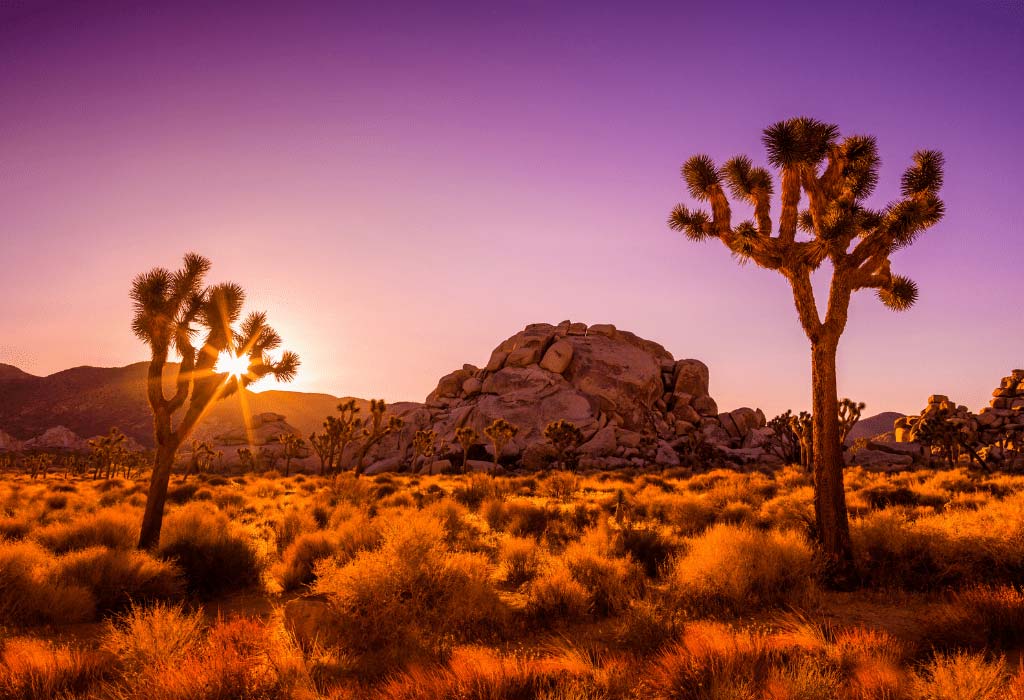Current work in wildlife, rivers, public lands, and climate
Press Releases
WildEarth Guardians files second lawsuit to save Joshua trees from extinction
“We’re in a race against the tragedy of extinction,” said Lindsay Larris, wildlife program director at WildEarth Guardians. “Anyone who has traveled to Joshua Tree National Park or the Mojave National Preserve feels a deep emotional connection to the Joshua tree. Over its 2.5-million-year history, this bizarre-looking plant has provided food and construction materials to ancestors of the Cahuilla people, habitat for numerous birds, mammals, insects and lizards that call the desert home, and inspiration to all. It is unimaginable to think of a Mojave Desert without this prehistoric species, especially when we had the opportunity to stop this from happening.”
This is the second time in less than five years that WildEarth Guardians has filed suit against the USFWS for finding Joshua trees do not warrant listing as “threatened” under the ESA. In September 2021, a federal district court ruled that the USFWS violated the ESA in multiple respects when it first denied Joshua trees federal protection in 2019. As part of its ruling, the court directed the USFWS to issue a new decision that accounts for all the climate change science it unreasonably disregarded. Despite the federal court’s 2021 ruling admonishing the USFWS for ignoring the dire predictions of these climate models, the agency did so once again in its March 2023 decision, which WildEarth Guardians is now challenging in the current case.
WildEarth Guardians is being represented by senior staff attorney Jennifer Schwartz. Ms. Schwartz also represented Guardians in the first Joshua tree case.
“The case for protecting Joshua trees under the ESA has only grown stronger since the USFWS last denied Joshua trees federal protections ,” continued Larris. “Biologists are already struggling to find seedlings in the hottest and driest parts of the Mojave. And they’ve all unanimously concluded that as adult trees die off, there will be no new generations to replace them outside of a miniscule amount of habitat, known as climate refugia. This remaining refugium for Joshua trees is, sadly, also the most vulnerable to severe wildfires that can destroy desert ecosystems for decades. Taken together, the threats to Joshua trees are stark evidence that the USFWS must act to save them with strong federal protections.”
The Mojave Desert is particularly ill-equipped to withstand wildfire as a result of invasive grasses, which can carry fire across thousands of acres. Together, the Dome fire in 2020 and the York fire in 2023 consumed more than 130,000 acres of the Mojave National Preserve, collectively killing around 2.3 million Joshua trees. This habitat was modeled as climate refugia for Joshua trees and researchers are seeing few seedlings survive from replanting efforts.
“While listing Joshua trees under the ESA won’t change these dire climate projections, the USFWS can ensure maximum protections for the little habitat expected to remain suitable for this beloved and charismatic plant,” said Larris. “We must focus our limited resources on preserving the few remaining places crucial to the species’ survival. This is the very essence of the federal government’s obligations under the ESA.”
Background:
WildEarth Guardians has been fighting for federal protections for the Joshua tree since the organization’s initial petition to list the species as “threatened” under the ESA in September 2015, citing the severe impacts of climate change on the native succulent. In August 2019, the USFWS first denied listing protection for what it clarified were actually two distinct species of Joshua tree – eastern Joshua tree (Yucca jaegeriana) and western Joshua tree (Yucca brevifolia) – because it believed neither species was likely to face a danger of extinction in the next 80 years. WildEarth Guardians filed a lawsuit in November 2019 in the Central District of California, challenging the USFWS’s decision. In September 2021, a federal court judge ruled that the USFWS did violate the ESA in its failure to list Joshua tree as “threatened” and ordered the USFWS to revisit the decision, taking into account the best available science, including climate change models. The USFWS issued a new decision, in March 2023, once again denying listing protections for the Joshua tree.
Though adult Joshua trees are still widely found throughout the Mojave, every peer-reviewed scientific study to model the impact of climate change on the species shows this desert icon will be functionally extinct in 90 to 99% of its current range by century’s end without immediate and robust interventions. The USFWS points to the fact that mature Joshua trees are still seen in significant numbers across the Mojave Desert region and that these trees will likely still be standing in the next 17-47 years as its basis for not listing the species as threatened. However, Joshua trees have long lifespans, commonly reaching 150 years, and a single “generation” can be 50 to 70 years due to the long time span before maturation. The USFWS has previously recognized in other listing decisions that in order to understand future extinction risk for such long-lived species it needs to examine the effects of “threats” at least one generation into the future. Yet here, the agency only considered whether already existing mature trees will still be alive mid-century, not whether they can successfully reproduce and replace themselves.

###